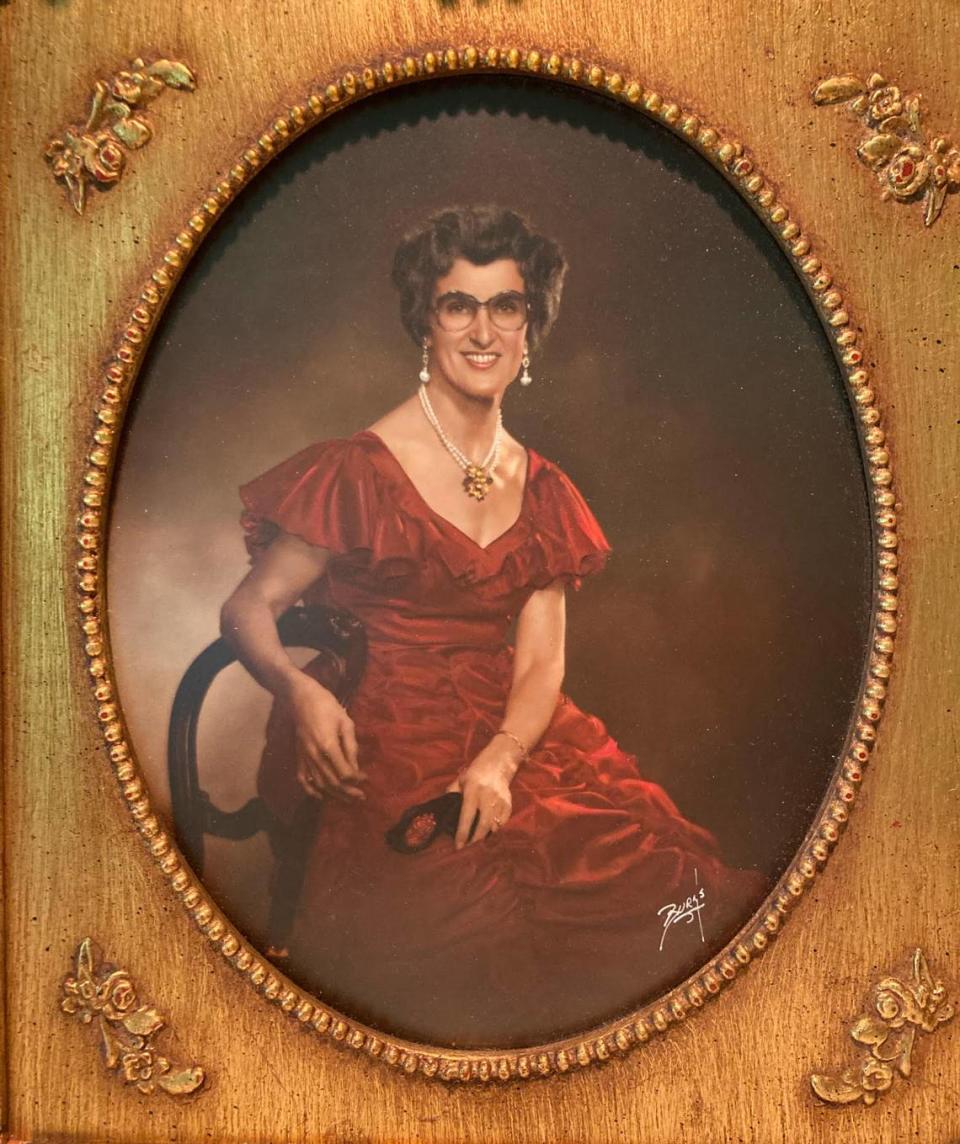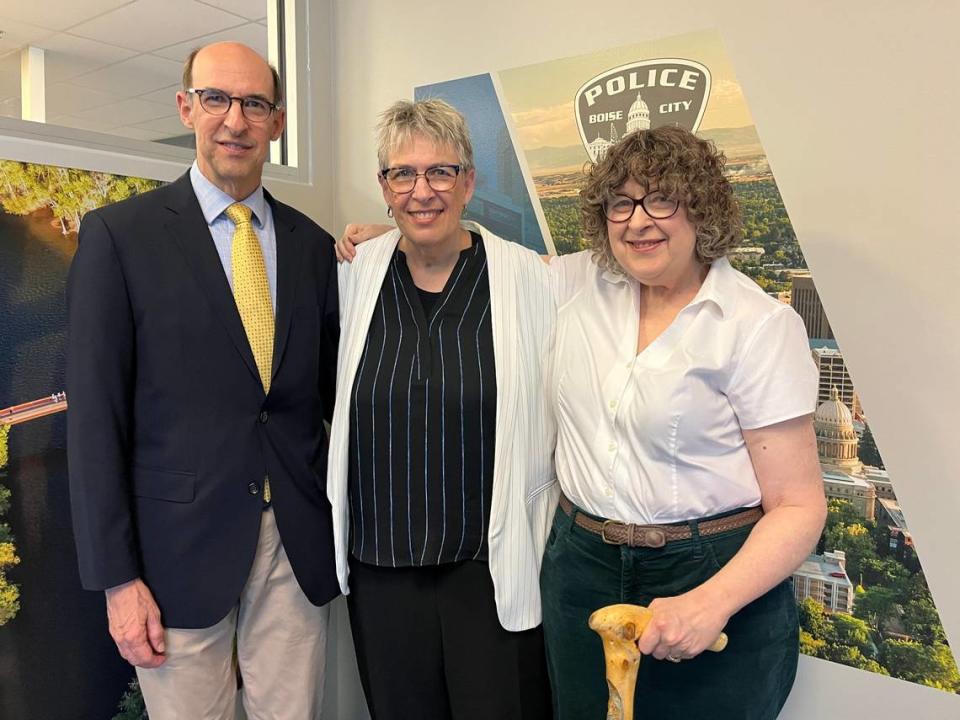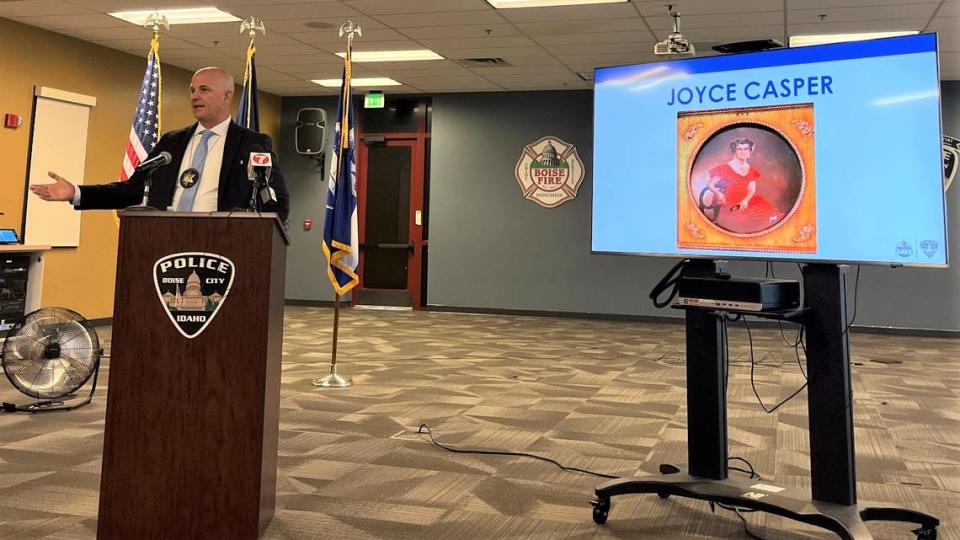This 1987 murder shocked Boise. Family, police seek closure after suspect revealed
Thirty-six years have passed since an unknown person murdered 65-year-old Joyce Casper in the parking lot of her Boise drug store. But her three children have never stopped hoping for answers.
“Every chapter in your life needs an end, an outcome. And until the crime was solved, we just didn’t know,” Chuck Casper, 71, said in an exclusive interview with the Idaho Statesman. “Everybody wants to know the end of a story, even sad ones.”
Last week, the children got that ending. The Boise Police Department announced July 7 that it had finally solved the case using DNA evidence.
The break came through the advent of a new crime-solving technique that involves using popular ancestry websites to build a family tree from DNA discovered at a crime scene, according to previous Idaho Statesman reporting.
Police officers took semen found at the scene and searched for DNA matches. They found a “twig” on the suspect’s tree in a distant cousin, allowing them to begin building a list of related suspects.

“We spent a considerable amount of time trying to figure out who we should speak with because, at this point, I could be talking to the killer, I could be talking to the killer’s son, his uncle, his aunt, his parents,” Boise Detective Paul Jagosh said at a news conference Sunday.
Through the help of some family members, police narrowed it down to a man named Frank A. Rodriguez, who fit the profile and had lived in Idaho. A DNA swab of his son confirmed that the DNA found at the scene belonged to Rodriguez.
Rodriguez moved to Idaho from Massachusetts as a teenager. He was 17 at the time of the murder and living just a few blocks away from the store. Photos of a young Rodriguez show a young man with slicked back dark hair and glasses.
Police described him as “severely mentally ill” and having “psychosexual rage component.” His Idaho criminal records shows a 1995 aggravated battery.
He died by suicide in 2007 in Caldwell. Rodriguez’s 2007 Statesman obituary describes him as a “beloved husband” and “painter by trade.” He loved reading, basketball and “attending concerts with his sons, who he loved more than anything,” the obit said.
Family grapples with new information
“It’s hard to put into words, to put a face to this person that did this horrendous thing to your mother,” Pauline Casper, 67, told the Statesman in an interview. “But when we saw a picture of him, he just seemed like a guy. Some guy you might see walking down the street. It was really disorienting in a way.”
Casper’s children said they have mixed feelings about his death. Rodriguez will never be brought to justice, but at the same time, they wondered if an early death prevented him from harming others. They also think a trial would have been difficult for them.
“It sounds like he didn’t exactly go on to a happily-ever-after life, so I suppose there’s more than one way to get punishment,” Pauline said.

Police looking for more victims
Casper was proud of Casper’s Vista Hallmark Shop, the drug store she owned and ran by herself after her husband’s death. She was known to stay late tidying and organizing after the store closed at 9 each night.
Police believe Rodriguez, who lived nearby and did not appear to know Casper, may have been the same man who attempted to steal her purse the week before as she walked to her car parked behind the Vista Village Shopping Center one night after leaving her store. Casper slapped his face, and he backed up enough that she could get in her car and drive away. The later sexual assault and murder may have been retaliation for that first attempt, according to police.
Around midnight of October 13, 1987, police believe Casper again headed out of her store to her car. Police believe Rodriguez was lying in wait in the parking lot. He sexually assaulted her, strangled her, and drove her car a short distance from where it was found the next morning.
“Looking at the details of the crime, and then just what I know about the perpetrator from speaking with his family, and his personality, it’s really a struggle to think this was a one and only event for him,” said Jagosh, the detective. “So there are considerable efforts to see if there are any other victims of this.”
There were no cameras, no witnesses, and little evidence. DNA testing was still in its infancy and not used by law enforcement in the United States at the time. Detectives looked into and then eliminated 145 suspects. The case grew colder and colder.
The crime shocked many in Boise. Without a suspect, some began fearing they could be next, according to former Boise Police Det. Lance Anderson.
“In the 1980s, Boise was still, in many ways, a small town where violent crimes were relatively rare,” Police Captain Matt Jones said. “I was 10 years old in 1987 and I still recall how the community grieved.”

Victim was beloved in Boise
Casper’s death hit Boise hard because of her prominence in the community, according to her family.
Kids would stop by the drug store for ice cream sodas where she would “fuss over them” and lend a sympathetic ear to their worries, according to her daughter, Roberta Casper Watson, 74. Casper would give high school girls advice about the latest make-up and hair products sold at the store.
“Mom was very friendly and vivacious and knew everybody,” Casper Watson told the Statesman. “She had worked at the store for many, many years and people loved her. My high school classmates were as upset with her death as I was.”
Family members flew in from California, Pennsylviania and Florida to be at the news conference. About 30 people attended, most of whom were law enforcement officers who had worked the case over the years.
The police chief called the officers’ names and, one by one, they rose to their feet to be recognized. Some of the officers were at the scene on the day Casper’s death was discovered.
“I had 27 years in the Violent Crimes Unit and no case had the same impact,” said Anderson, the former detective, now 72. “Even after retirement in 2005, the case stayed with me.”

